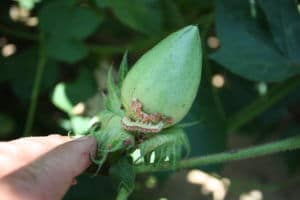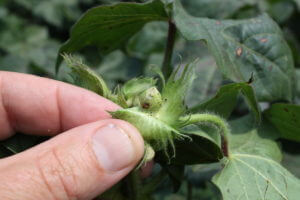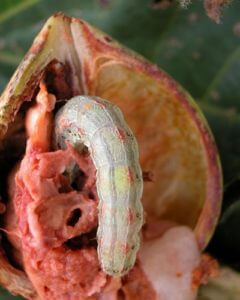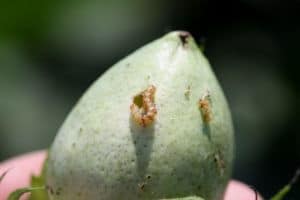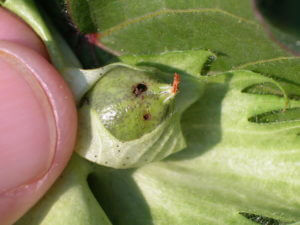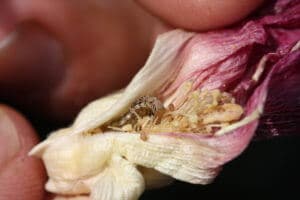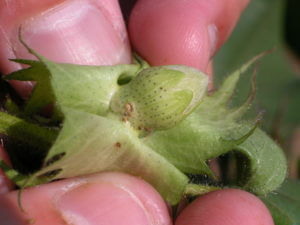Management options
| Insecticide (Trade Names) BOLLWORM* | Lb Active Ingredient per Acre | Amount Formulation per Acre | Performance Rating |
|---|---|---|---|
| bifenthrin (Brigade 2, Discipline 2, Fanfare 2) | 0.078 - 0.1 | 5 - 6.4 oz | 7 |
| cypermethrin 2.5 | 0.078 - 0.1 | 4 - 5 oz | 7 |
| deltamethrin (Delta Gold 1.5) | 0.023 - 0.03 | 2 - 2.56 oz | 7 |
| esfenvalerate (Asana XL 0.66E) | 0.036 - 0.05 | 7 - 9.6 oz | 7 |
| β-cyfluthrin (Baythroid XL 1) | 0.0156 - 0.020 | 2 - 2.6 oz | 7 |
| γ-cyhalothrin (Declare 1.25) | 0.0146 - 0.02 | 1.5 - 2.05 oz | 7 |
| λ-cyhalothrin (Warrior II 2.08) | 0.03 - 0.04 | 1.92 - 2.56 oz | 7 |
| Z-cypermethrin (Mustang Max 0.8) | 0.0188 - 0.0225 | 3 - 3.6 oz | 7 |
| BOLLWORM AND TOBACCO BUDWORM | |||
| acephate 90 (Orthene 90S) | 0.9 | 1 lb | 5 |
| chlorantraniliprole (Vantacor 5 SC) | 0.047 - 0.089 | 1.2 - 2.28 oz | 9 |
| chlorantraniliprole, λ-cyhalothrin (Besiege) | See label | 7 - 12.5 oz | 9 |
| chlorantraniliprole, bifenthrin (Elevest) | See label | 5.6 - 9.6 oz | 9 |
| emamectin benzoate (Denim 0.16) | 0.01 - 0.015 | 8 - 12 oz | 7 |
| indoxacarb (Steward 1.25) | 0.11 | 11.3 oz | 8 |
| methomyl (Lannate LV 2.4) | 0.45 | 24 oz | 4 |
| spinetoram, methoxyfenozide (Intrepid Edge) | See label | 6 - 8 oz | 8 |
| spinetoram (Radiant SC 1) | 0.033 - 0.0625 | 4.25 - 8 oz | 8 |
| spinosad (Blackhawk 36% WDG) | 0.056 - 0.072 | 2.0 - 3.2 oz | 8 |
* Pyrethroids have often been used when the population is exclusively bollworm, such as would be expected on Bt cotton varieties, but the efficacy of pyrethroid insecticides for the control of bollworm has declined. Thus, alternative chemistries or tank mixes with alternative chemistries may be needed for adequate control.
- Plant early maturing varieties and avoid unnecessary insecticide applications that may disrupt populations of natural enemies.
- Bt cotton varieties provide excellent control of tobacco budworm.
- Bt cotton varieties provide good but variable levels of control of bollworm. Insecticide applications may be needed in some cases, particularly in flowering cotton.
- Insecticide applications can be terminated when cotton has accumulated 350-400 DD60s past NAWF5 (NAWF5 = average of 5 nodes above a first position white flower).

